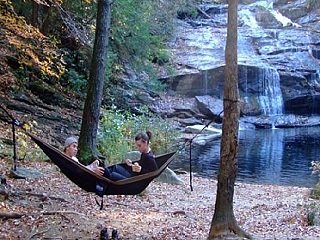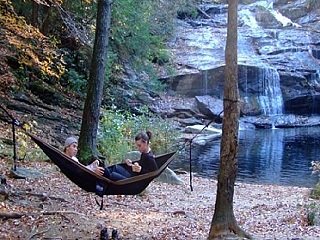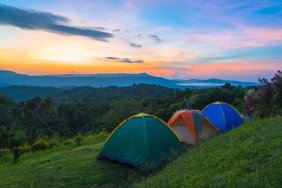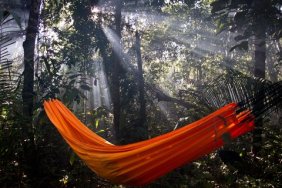 At the end of a long day on the trail, most have their minds set on one thing: a comfortable place to rest their tired bodies for the night. For many, this means a tent and a sleeping bag. For some, especially those who have the fortune of enjoying the outdoors in a region where temperatures are consistently warm, this can mean a hammock. Hammocks these days have grown a lot from rope and a stand, and the models designed for hiking and camping are compact, durable, and easily affordable for anyone looking for more room in their pack or just a change of pace from a sleeping bag.
At the end of a long day on the trail, most have their minds set on one thing: a comfortable place to rest their tired bodies for the night. For many, this means a tent and a sleeping bag. For some, especially those who have the fortune of enjoying the outdoors in a region where temperatures are consistently warm, this can mean a hammock. Hammocks these days have grown a lot from rope and a stand, and the models designed for hiking and camping are compact, durable, and easily affordable for anyone looking for more room in their pack or just a change of pace from a sleeping bag.
The hammocks designed for trips to the outdoors are no joke. They fasten securely to trees with the aid of extremely strong and safe straps that are designed to hold up to 400 pounds, and the hammocks themselves are made of durable, breathable, and comfortable material, like inter-woven nylon or parachute-grade cloth. Furthermore, the hammocks made for made for hiking and backpacking, which means they’re designed to be easily carried. Many of the available hammocks for this purpose fit into a compact bag that packs down to around the size of a grapefruit, which makes a long hike much easier and also gives you more room in your pack.
Hammocks are a great option for when the temperatures are high enough to make sleeping outside tolerable. However, there are factors to consider, such as rain, and every outdoorsmen’s favorite: mosquitoes. Not to worry, though, companies that make the different hammocks on the market—ENO, Byer, Hennessy—take this into consideration when making hammocks. ENO, for instance, makes a rainfly tarp for their hammocks, as well as a protective bug net. Byer offers a hammock that integrates a net into its design, and Hennessy makes a hammock that comes equipped with a large rain tarp.
Hammocks tend to be quite inexpensive—ENO’s models start around $45, Byer’s start around $25, and Hennessy’s are the most expensive, starting around $100 and going up significantly from there.
While many regions in the country don’t offer year-round hammock-friendly weather, there are seasons that offer ample opportunities to sleep under the stars, and adding a hammock to your collection of gear isn’t a bad idea. They make great alternatives to sleeping bags and tents, and save a lot of space, which leaves more room for other gear that might otherwise need to be left at home. If you’re planning some overnight trips this summer, picking up a hammock isn’t a bad idea. You’ll love the space they save and how easily they fit into your pack, and no one can argue against the allure of hanging between two trees and staring up at the stars all night.








